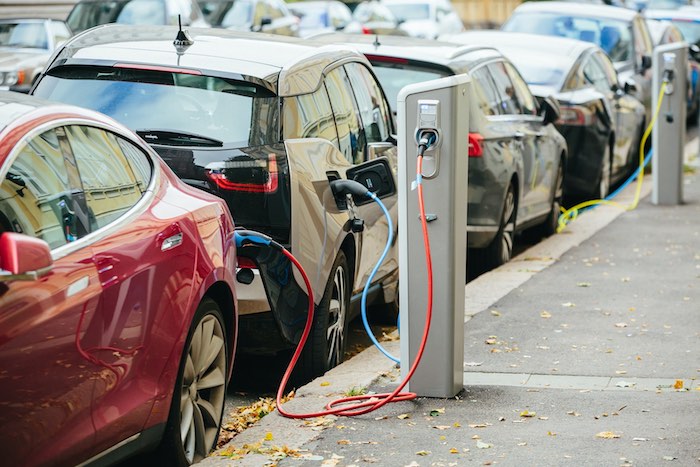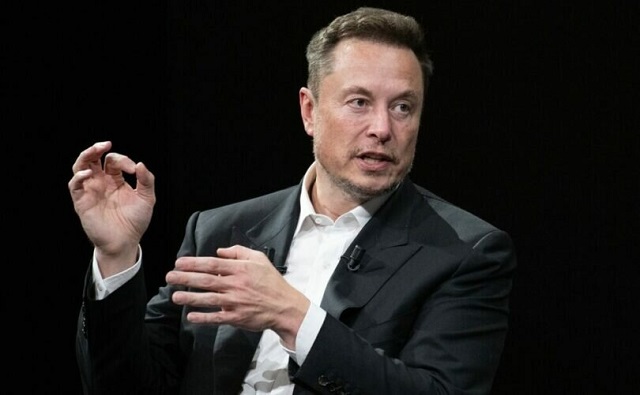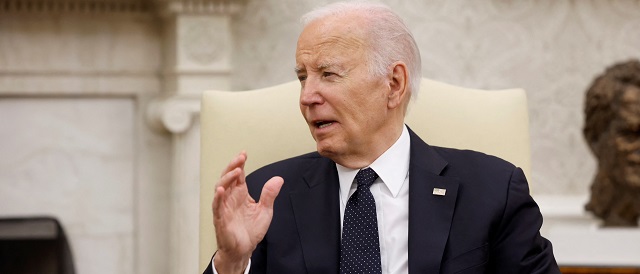Automotive
Lithium Prices: What They Tell Us About the Popularity of Electric Vehicles

From EnergyNow Media
By Jim Warren
The online database, Trading Economics, indicates that in June 2023 the global price for lithium had risen to $59,212 per tonne. But by November it had fallen by more than half to $27,218. Prices have continued to plummet. As of December 31, lithium was selling for just $18,242 per tonne.
How could this be? Electric vehicle (EV) mandates established in many rich developed countries over the past few years had analysts predicting that if targets were actually met, the world would need 388 new lithium mines by 2035. A Fraser Institute study suggests that getting enough mines built to satisfy all the mandates will be a problem. It takes from seven to ten years to get a mine financed, approved and built.
Canada’s Environment Minister, Steven Guilbeault is certainly trying to drive up demand for lithium. The federal government’s Zero Emissions Vehicle Standard insists that by 2030, 20% of all new passenger cars, SUVs and light trucks sold in Canada must be greenhouse gas emissions free. New battery plants are being handsomely subsidized in Canada to power all of the new electric cars that will presumably be required. With similarly aggressive mandates in Europe and US states led by California there should be heavy demand for lots of batteries and a mountain of lithium.
The most likely explanation for collapsing lithium prices is US consumers’ reluctance to embrace electric vehicles. The Economist reports that EVs accounted for just 8% of new vehicle sales in America this past year. GM was only able to sell 20,000 EVs, but it did manage to sell over half a million fossil-fueled vehicles. Disappointing demand for EVs prompted GM to shelve plans to spend $4 bn to convert one of its plants to electric pickup truck production. Ford has similarly lost enthusiasm for EVs. This past fall it decided to delay plans to invest $12bn in EV production. Companies that make lithium batteries for EVs have responded accordingly. This past fall battery plants in Georgia and Michigan laid off hundreds of employees. Fewer batteries translated into less demand for lithium.
It would appear that EV adoption goals established under Joe Biden’s eye-wateringly expensive green transition initiative (disguised as the “Inflation Reduction Act,”) are not being met. The Biden plan offers tax credits of up to $7,500 for people who purchase EVs. However that hasn’t been a sufficient sweetener. The average EV sold in the US has a $52,000 price tag and that doesn’t account for additional costs like wiring a home charging set up. California, Florida and Texas account for over half of US EV sales and are also responsible for high average sticker prices. Ostensibly virtuous EV buyers in the US have a bit of hypocrisy going on. They’ll happily drive EVs as long as they are full size SUVs. Batteries are heavy which makes EVs heavier than gas and diesel fueled vehicles. And, electric SUVs are especially heavy—heavy enough to increase the chances of deadly collisions. Tesla has apparently created a super-sized SUV, designed for wealthy California drivers, that makes the Hummer look like a toy. And, because they are extra heavy, driving them uses more electricity and it takes extra energy and materials to build them. Furthermore, given that fossil fuels still account for 60% of the electricity generated in the US, EVs are less environmentally friendly than advertised. They are far from being “emissions free.”
EVs are indeed more popular in Europe and China. In Europe 1.5 million EVs were sold this past year and 3.5 million were sold in China. The models sold in China are small, zippy units that don’t weigh much. However, like in the US, around 60% of the electricity consumed in China is generated by burning fossil fuels (mostly coal).
Despite having a copycat EV mandate that mirrors those in Europe, Canadian sales have been even less stellar than what the US has been able to achieve. In 2021, EVs accounted for just 5.3% of new car sales in Canada. Most of them were sold in Ontario, BC and Quebec (55,229) which makes sense—those are the provinces where most Canadians and most climate-alarmed Canadians live. In all the rest of Canada just 7,301 electric vehicles were purchased.
Clearly, the adoption of electric vehicles has failed to meet the overly ambitious targets set by environmentally-friendly policy makers. This result lines up with the litany of missteps and missed targets that have plagued green transition projects over the past two years. The failures include the big decline in demand for new solar and wind power projects and the reversal of greenhouse gas emissions reduction projects in the UK and Europe. An issue this could raise for us in Canada is that Steven Guilbeault might see the international data and worry that his transition plans need to be beefed-up. He could make them even more onerous, expensive and ludicrous.
Automotive
Governments in Canada accelerate EV ‘investments’ as automakers reverse course

From the Fraser Institute
Evidence continues to accrue that many of these “investments,” which are ultimately of course taxpayer funded, are risky ventures indeed.
Even as the much-vaunted electric vehicle (EV) transition slams into stiff headwinds, the Trudeau government and Ontario’s Ford government will pour another $5 billion in subsidies into Honda, which plans to build an EV battery plant and manufacture EVs in Ontario.
This comes on top of a long list of other such “investments” including $15 billion for Stellantis and LG Energy Solution, $13 billion for Volkswagen (with a real cost to Ottawa of $16.3 billion, per the Parliamentary Budget Officer), a combined $4.24 billion (federal/Quebec split) to Northvolt, a Swedish battery maker, and a combined $644 million (federal/Quebec split) to Ford Motor Company to build a cathode manufacturing plant in Quebec.
All this government subsidizing is of course meant to help remake the automobile, with the Trudeau government mandating that 100 per cent of new passenger vehicles and light trucks sold in Canada be zero-emission by 2035. But evidence continues to accrue that many of these “investments,” which are ultimately of course taxpayer funded, are risky ventures indeed.
As the Wall Street Journal notes, Tesla, the biggest EV maker in the United States, has seen its share prices plummet (down 41 per cent this year) as the company struggles to sell its vehicles at the pace of previous years when first-adopters jumped into the EV market. Some would-be EV makers or users are postponing their own EV investments. Ford has killed it’s electric F-150 pickup truck, Hertz is dumping one-third of its fleet of EV rental vehicles, and Swedish EV company Polestar dropped 15 per cent of its global work force while Tesla is cutting 10 per cent of its global staff.
And in the U.S., a much larger potential market for EVs, a recent Gallup poll shows a market turning frosty. The percentage of Americans polled by Gallup who said they’re seriously considering buying an EV has been declining from 12 per cent in 2023 to 9 per cent in 2024. Even more troubling for would-be EV sellers is that only 35 per cent of poll respondents in 2024 said they “might consider” buying an EV in the future. That number is down from 43 per cent in 2023.
Overall, according to Gallup, “less than half of adults, 44 per cent, now say they are either seriously considering or might consider buying an EV in the future, down from 55 per cent in 2023, while the proportion not intending to buy one has increased from 41 per cent to 48 per cent.” In other words, in a future where government wants sellers to only sell EVs, almost half the U.S. public doesn’t want to buy one.
And yet, Canada’s governments are hitting the gas pedal on EVs, putting the hard-earned capital of Canadian taxpayers at significant risk. A smart government would have its finger in the wind and would slow down when faced with road bumps. It might even reset its GPS and change the course of its 2035 EV mandate for vehicles few motorists want to buy.
Author:
Automotive
Red States Sue California and the Biden Administration to Halt Electric Truck Mandates

From Heartland Daily News
By Nick Pope
“California and an unaccountable EPA are trying to transform our national trucking industry and supply chain infrastructure. This effort—coming at a time of heightened inflation and with an already-strained electrical grid—will devastate the trucking and logistics industry, raise prices for customers, and impact untold number of jobs across Nebraska and the country”
Large coalitions of red states are suing regulators in Washington, D.C., and California over rules designed to effectively require increases in electric vehicle (EV) adoption.
Nebraska is leading a 24-state coalition in a lawsuit against the Environmental Protection Agency’s (EPA) recently-finalized emissions standards for heavy-duty vehicles in the U.S. Court of Appeals for the D.C. Circuit, and a 17-state coalition suing the state of California in the U.S. District Court for the Eastern District of California over its Advanced Clean Fleet rules. Both regulations would increase the number of heavy-duty EVs on the road, a development that could cause serious disruptions and cost increases across the U.S. economy, as supply chain and trucking sector experts have previously told the Daily Caller News Foundation.
“California and an unaccountable EPA are trying to transform our national trucking industry and supply chain infrastructure. This effort—coming at a time of heightened inflation and with an already-strained electrical grid—will devastate the trucking and logistics industry, raise prices for customers, and impact untold number of jobs across Nebraska and the country,” Republican Nebraska Attorney General Mike Hilgers said in a statement. “Neither California nor the EPA has the constitutional power to dictate these nationwide rules to Americans. I am proud to lead our efforts to stop these unconstitutional attempts to remake our economy and am grateful to our sister states for joining our coalitions.”
(RELATED: New Analysis Shows Just How Bad Electric Trucks Are For Business)
While specifics vary depending on the type of heavy-duty vehicle, EPA’s emissions standards will effectively mandate that EVs make up 60% of new urban delivery trucks and 25% of long-haul tractors sold by 2032, according to The Wall Street Journal. The agency has also pushed aggressive emissions standards for light- and medium-duty vehicles that will similarly force an increase in EVs’ share of new car sales over the next decade.
California’s Advanced Clean Fleet rules, meanwhile, will require that 100% of trucks sold in the state will be zero-emissions models starting in 2036, according to the California Air Resources Board (CARB). While not federal, the California rules are of importance to other states because there are numerous other states who follow California’s emissions standards, which can be tighter than those required by the EPA and other federal agencies.
Critics fear that this dynamic will effectively enable California to set national policies and nudge manufacturers in the direction of EVs at a greater rate and scale than the Biden administration is pursuing.
Trucking industry and supply chain experts have previously told the DCNF that both regulations threaten to cause serious problems for the country’s supply chains and wider economy given that the technology for electric and zero-emissions trucks is simply not yet ready to be mandated at scale, among other issues.
Neither CARB nor the EPA responded immediately to requests for comment.
Nick Pope is a contributor to The Daily Caller News Service.
Originally published by The Daily Caller. Republished with permission.
-

 Opinion2 days ago
Opinion2 days agoCanada’s fertility, marriage rates plummet to record lows: report
-

 Alberta1 day ago
Alberta1 day agoRed Deer Hospital Lottery – Second Chance Early Bird Prize!!!
-

 armed forces1 day ago
armed forces1 day agoTrudeau government has spent $10 million promoting DEI in the military as recruitment flounders
-

 illegal immigration2 days ago
illegal immigration2 days agoPanama’s Incoming President Wants To Shut Down His Country’s Most Treacherous Route For Migrants — But Will It Work?
-

 COVID-191 day ago
COVID-191 day agoMore victories for freedom as ArriveCAN charges dropped and fines reduced
-

 City of Red Deer2 days ago
City of Red Deer2 days agoCity Council paving the way for more house suites, backyard suites, tiny homes, and duplexes
-

 COVID-191 day ago
COVID-191 day agoTrudeau government only sought legal advice after Emergencies Act was invoked, records indicate
-

 Brownstone Institute1 day ago
Brownstone Institute1 day agoThe WHO’s Proposed Pandemic Agreements Worsen Public Health









